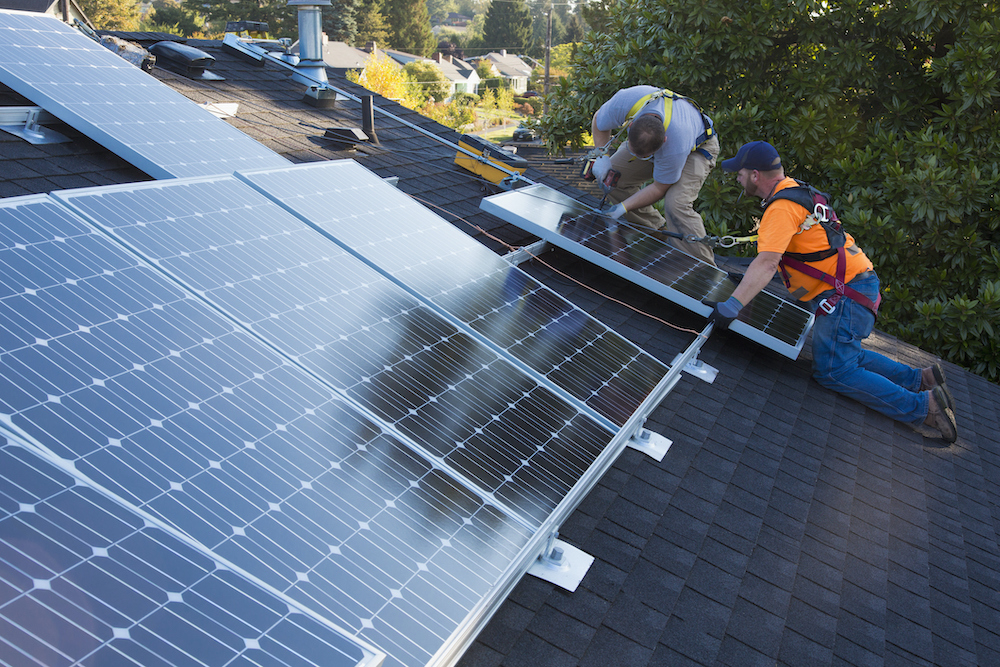- Installations of solar, wind and other renewable energy sources are expected to fall 13% this year, according to the International Energy Agency.
- Pandemic-induced economic shocks are hammering the growth of renewable energy, which is seen by many ESG investors as an alternative to fossil fuels.
- Government policy and financing support remain keys to the future growth of renewable energy, says an IEA expert.
For the first time in two decades, the world is on track to add fewer solar, wind and other renewable energy sources this year than the year before, due to a slowing economy and the COVID-19 pandemic.
Renewable power capacity is set to grow by 167 gigawatts in 2020, 13% less compared with last year. The first annual decline in new additions since 2000 will be caused by construction delays, supply chain disruptions and a capital crunch due to global lockdowns and the outbreak, the International Energy Agency says in a recent report.
Heymi Bahar, a senior analyst for renewable energy markets and policy at the IEA, says rooftop solar power is especially vulnerable because of its short financing cycle, as dwindling budgets and social distancing measures prevent work crews from installing solar panels on commercial buildings and residential homes.
“Rooftop solar [systems are] expected to get a big hit in 2020, as individuals and small companies are seen re-prioritizing their investment decisions given the upcoming economic crisis,” Bahar told Karma.
The steady addition of renewable energy capacity, driven by leaps in the adoption of rooftop solar power, has been viewed positively by ESG investors who support the sector’s slow replacement of fossil fuels, linked to greenhouse gases and climate change.
Now, renewables are being affected by the same declining demand that caused oil and gas prices to tank. However, alternative energy sources do not usually compete directly with oil and gas because renewables have priority access to the electricity grid in many markets. Fossil fuel plants reduce their output when demand goes down.
Bahar says over 80% of renewable plants in operation have long-term contracts with fixed energy prices, making them mostly unaffected by low natural gas prices.
Biofuels, which are used in the transportation sector, will not fare as well, however, having been strongly affected by the reduction in demand for fossil fuels.
The global appetite for gasoline is expected to fall by 9% this year, while diesel demand is set to fall by around 6%. The trend limits the use of biofuels, which are usually blended in with fossil fuels, according to government-mandated percentages. The IEA forecasts transport biofuel production may fall by 13% in 2020, with ethanol output shrinking by 15%.
Renewable energy has been the fastest-growing energy source in recent years, but it accounts for only about a 6% share of primary energy while coal, oil and gas still comprise more than 80% in 2020, according to data from BP.
Renewable ventures with long-term financing cycles, such as the construction of onshore wind farms, have been affected by delays. But they are faring better during the downturn since many projects in the pipeline have already been funded.
The overall growth trend for renewables varies by region. Countries in Africa and Asia may find it difficult to procure financing for their renewable energy projects amid the global downturn pushing some planned projects beyond next year, says the IEA.
Meanwhile, lockdown measures in Europe have hurt utility-scale renewable projects but global renewable growth is expected to recover next year, boosted by two large hydropower projects in China scheduled to be commissioned in 2021, says the Paris-based agency that advises governments on energy matters.
China and the U.S. are both expected to see a rise in renewable energy growth this year and next compared with last year, as developers in both nations rush to complete projects in order to take advantage of government incentive schemes that are set to expire in the next two years.
Although renewable energy sources such as solar power and wind power have largely become price-competitive with nuclear power and conventional fossil fuel plants, government policy and financing incentives for developers still play a role in the growth of green power.
The agency warns alternative energy projects face headwinds as gloomy market conditions have put a strain on many national coffers.
“The future of renewables is in the hands of governments because [they] need to implement the announced projects in order for the renewable project pipeline to continue to be active,” says Bahar. “And there are a few challenges here with budget constraints [due to] the COVID-19 crisis.”






















